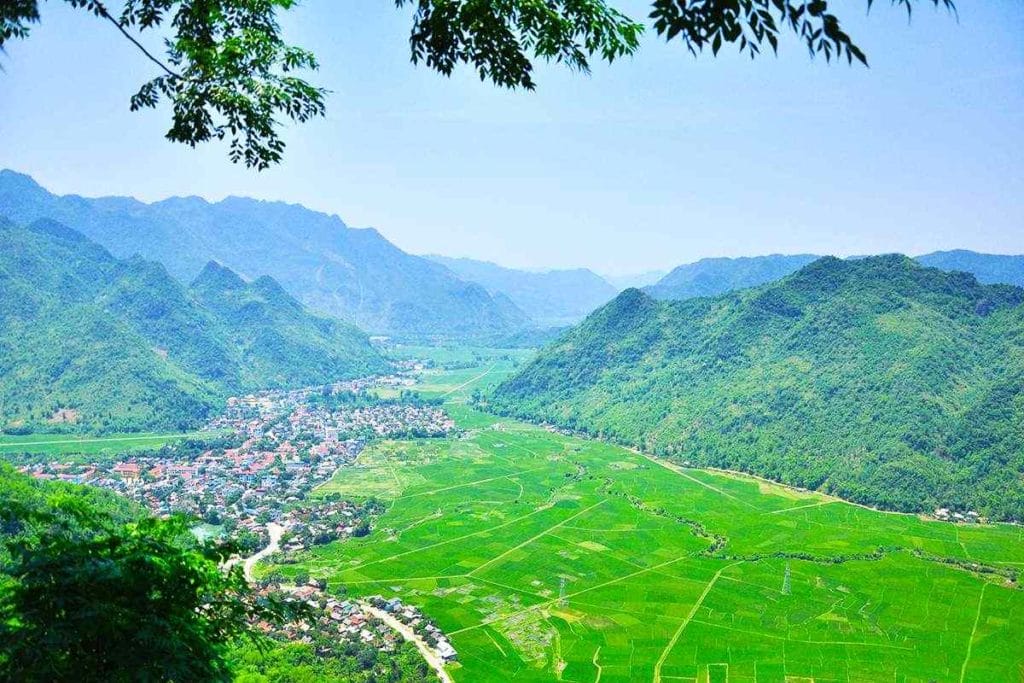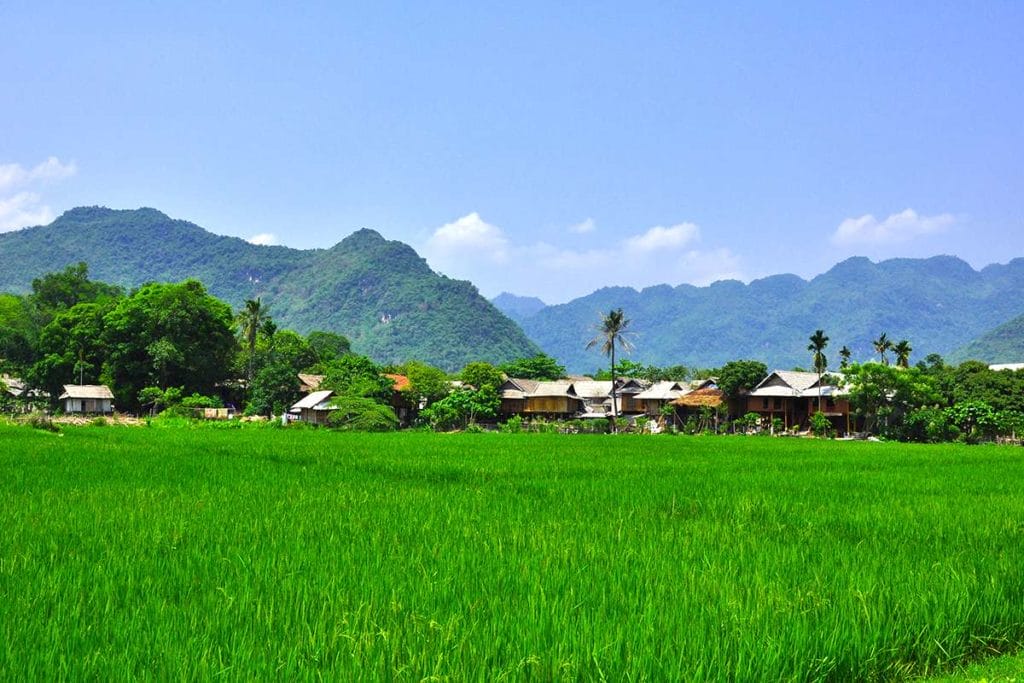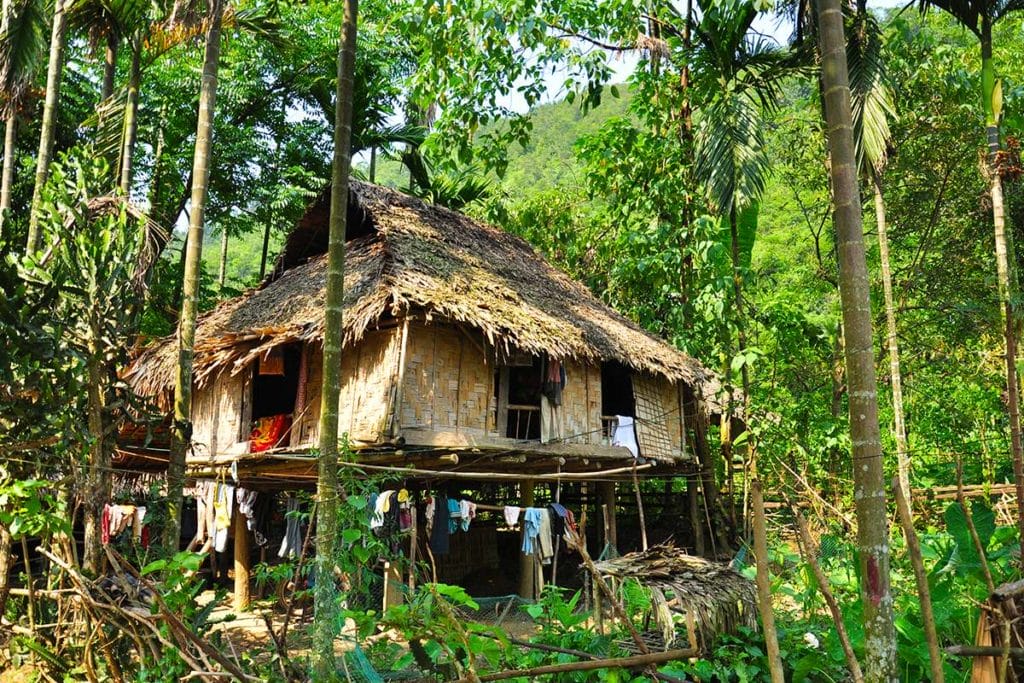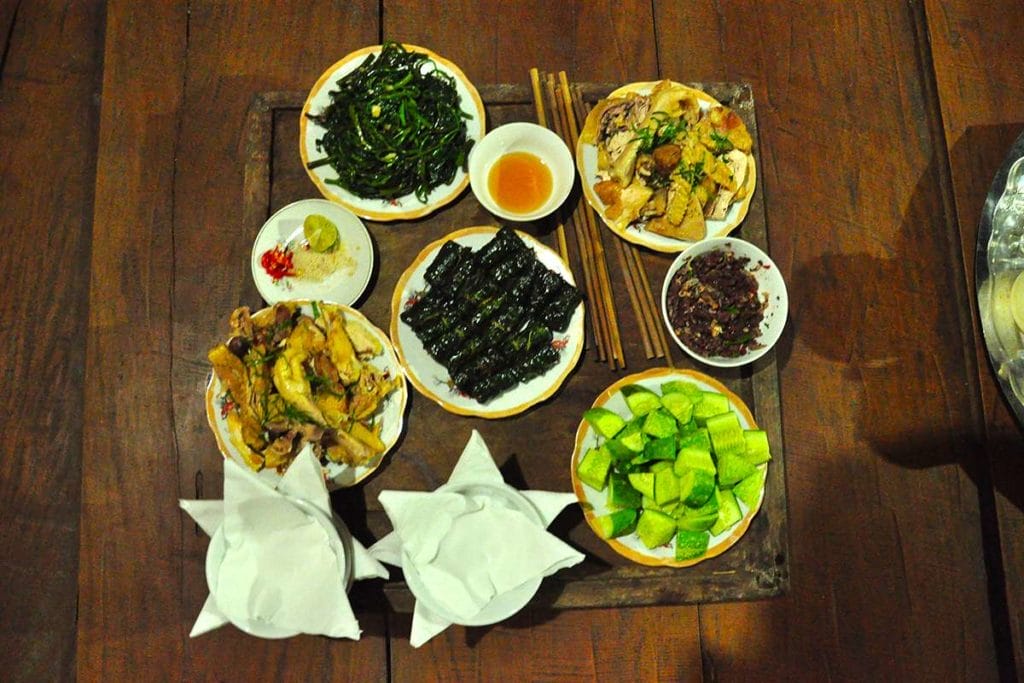Mai Chau highlights and travel guide
The idyllic, rural valley of Mai Chau is just 150km from Hanoi but feels like a completely different world. Fields and rice paddies sprawl out across the vista, and the mountains fade sleepily into the horizon.The only soundtrack here is that of nature, the delicate birdsong, the mumbles of the buffaloes, the squawk of the chickens, and the children playing freely in the fields. Although Mai Chau has become an increasingly popular tourist destination, it has retained its welcoming and laidback ambience.

The town itself sits in a fertile valley enveloped on either side by rambling hills all carpeted in thick green forest. The paddies and fields of the town provide the main sustenance for the people living there and elegantly change colour with the seasons. In Spring, the fields are bursting with the bright, vivid green of the young plants. Over the Summer this gradually changes, the paddies morphing into a sea of gold in the Autumn.
Most of the towns are populated by the White Thai ethnic groups but there are also some others in the area such as the H’mong Village of Xa Linh. The villages are small and blend seamlessly with the environment. The majority of houses are skillfully built using a combination of bamboo and timber with thatched roofs, the natural materials complimenting the unblemished surroundings. The main trades in this undisturbed settling, weaving and farming, are now complemented by the tourism that the area attracts. The hospitality of the local families is one of the main charms of the area. The laid-back atmosphere of the environment seems to be an extension of the warm, easy going people that live there.
See and Do
Another fantastic viewpoint is the Thung Khe mountain pass which offers stunning views of Mai Chau from above. Carved into the white rock mountain, this sweeping road is said to experience all four seasons in just one day. Starting with the dewy, misty Spring mornings follwed by the bright Summer’s sun in the afternoon, the cool Autumnal breeze in the evening and finally the harsh Winter’s night.

As well as the luxurious green farmland and dramatic mountains, Mai Chau also boasts some impressive caves, one of which sits at the top of a steep hill. Chieu Cave or 1000 step cave is a mysterious chamber which is used as a place of prayer. The jagged opening of the cave is spiked with stalactites and stalagmites and curious rock formations. As well as the cave itself, the views from here are remarkable, the tiny colourful houses of the village below, the rolling green fields and the imposing mountains.
Culture and Arts

The people of the Thai ethnic minority communities are known for their creativity which shines through in the intricate brocade they weave by hand. The women sit outside at their handmade looms, expertly manipulating the colorful threads in and out to create amazingly detailed patterns. You can watch the women hard at work in the warm sun or learn some more about the art and even have a go yourself.
Another traditional art is the Thai folk dancing in which stories of traditional life in rural Vietnam are recreated as dances. Young people wear their finest traditional outfits and perform either accompanied by music or an orchestra of traditional singing and cheering. The young women become a flurry of colour as they elegantly glide through the air waving their colourful fans. The jovial atmosphere of the performances will have onlookers captivated by the colourful Thai culture.
As with the rest of Vietnam, the Sunday market is the busiest social event of the week. People from all of the surrounding villages gather to sell their wares and catch up with friends. Pa Co Market is just 20km from Mai Chau and is open every Sunday. Here you can see the local H’mong people dressed in their finest attire, the colourful weaving of their outfits enhanced by the bright sun. The stalls of colourful brocade are accompanied by other handmade items, local produce and the occasional animal or two.
Food and Drink

The Thai community also celebrates the Praying for Rain Festival in which they come together to pray to the God of Water for plentiful rain for their crops. After sharing their wishes with the god, the local people celebrate with singing, dancing and games.
